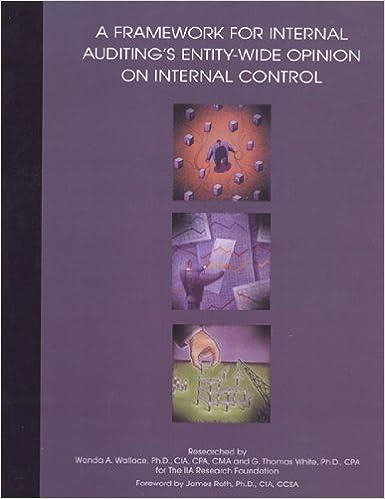Question
T q1 K1 L1 M1 q2 K2 L2 M2 1 17.58803174 6.03200629 12.2866701 33.22331207 11.5695339 4.943245145 16.35936866 44.26159009 2 10.65566683 3.895871833 18.31385066 20.19001856 9.861009446 4.306101289


T q1 K1 L1 M1 q2 K2 L2 M2 1 17.58803174 6.03200629 12.2866701 33.22331207 11.5695339 4.943245145 16.35936866 44.26159009 2 10.65566683 3.895871833 18.31385066 20.19001856 9.861009446 4.306101289 8.811327556 24.64563891 3 12.13358319 3.422805817 9.552154785 48.96612471 14.72866522 7.298765678 8.261134702 37.72661795 4 11.129332 5.620590645 8.434146832 20.66080458 12.69280112 4.936418789 8.339504564 48.37148384 5 16.10988551 3.688077067 15.56347147 53.79108981 15.32819607 5.714610032 9.415820333 53.27292202 6 12.8049208 4.527478084 7.694665435 31.90029253 10.91835554 2.723655881 13.19097575 24.25233577 7 18.26634862 5.528335783 14.40757377 47.70893973 13.74692285 4.129870397 16.49508304 32.988555 8 14.0761169 4.357418243 9.709107799 32.9842734 12.81895804 4.225537368 7.827964867 37.08368195 9 17.85145296 5.337004144 11.22655888 29.46962582 17.37258722 7.262512023 17.93610649 34.73300193 10 13.17236191 3.151616967 17.12400037 24.65091947 15.41344272 6.882019944 14.05967637 25.4645369 11 15.68972049 5.91908156 8.061190648 50.14296061 11.15156184 3.085357291 8.678791872 36.46371477 12 16.05554069 4.034588461 14.38486285 47.83946648 13.59962623 4.27255573 9.61051131 34.96877588 13 16.25222121 5.256923288 10.48399629 41.54495458 15.80961882 7.288744809 13.9172826 20.20205997 14 15.62798077 6.206094159 8.385972893 27.40964083 21.38480665 7.011394236 18.91273411 49.45332093 15 14.16748734 4.955234341 8.439775257 27.9494279 14.02669396 3.422925811 14.41695453 26.75623325 16 15.74491605 4.352990355 15.44563376 37.30307472 11.02359417 3.013589029 10.68993721 26.91921679 17 20.77602216 7.030573365 19.40540241 33.73834571 13.63779898 3.17057651 10.94538982 24.62843199 18 16.51810725 5.22285781 8.017745348 50.93222198 15.60656853 3.815402753 15.86237951 26.71421033 19 11.83967872 3.617839117 10.43184863 28.89152871 13.66032091 3.944291472 12.52950627 28.31013179 20 24.16699791 6.666953018 16.30118651 44.18739094 15.61535775 6.417178748 8.451493742 20.69528118 21 14.93970381 3.814249756 9.870543713 37.75902417 18.40700968 5.375356953 7.614958506 38.7692836 22 13.42826807 3.388631031 9.437966419 45.60672865 14.3811214 3.46018812 15.48377537 47.84106035 23 12.8968861 3.586063342 11.23090872 24.85228061 14.35742645 3.686427767 13.06739719 30.7537326 24 21.13187285 3.924281913 11.4258192 47.13495035 18.87761492 4.57259515 16.15300158 33.52262489 25 18.11081065 5.99206869 11.53915356 35.80991642 16.88083679 4.590556185 8.477464822 32.64023784 26 22.05658601 3.900393281 11.00119615 46.72346998 15.18507008 4.397524393 14.11977167 31.38105847 27 17.91824456 4.954148752 13.06282082 32.6604081 18.24407692 3.810451214 10.65878695 51.6838724 28 16.96521838 4.966910564 10.96922545 20.17647339 25.95226275 7.300637111 12.94766415 44.37681832 29 13.94833317 4.238955984 10.22360667 26.16695296 19.84057026 6.293435435 19.44226109 20.3596409 30 12.48926753 3.06071935 13.07181655 29.34029909 22.56139111 4.98651067 17.74283693 46.68700722
THIS FILE is extracted from a dataset to contain data about the production of an industry (say rice) of two provinces over 30 years. Each province uses three inputs: capital (K), labor (L) and other material (M) to produce output (q). The research question is to investigate whether province policies have had different impact on the total factor productivity (TFP) growth rate of the industry. Attempt this research question by first downloading the dataset (and stack relevant data if necessary) and estimate this specification: log(q) = Base + BpD+Br(T 1) + Brd(T 1)D + where Base 00 + ak log(K) + a, log(L) + am log(M). T is the time trend (1,2,3.. 30 ) and D is a dummy variable which takes the value 0 for province 1, and 1 for province 2. In other words, we add the dummy, the time trend and their interaction into the baseline log-log specification. Using the estimate: Calculate the annual TFP growth rate (as a percentage) for province 1 (a). Calculate the annual TFP growth rate (as a percentage) for province 2 (b). Test (using the t-test approach) for the null hypothesis that at the beginning (T=1), there is no significant difference between the TFP between the two provinces. Can we reject the null hypothesis at 10% level of significance? (0) Test (using the t-test approach) for the null hypothesis that the TFP growth rates of the two provinces are the same. Can we reject the null hypothesis at 10% level of significance? (d) What is correct? Numerical results are rounded to the nearest 2-digit. Select one: Select one: O a=1.49, b= 1.61, c=No, d=No. O a=0.92, b= 1.61, c=Yes, d=Yes. O a=0.92, b= 2.03, c=No, d=Yes. a=0.92, b= 2.08, c=No, d=NoStep by Step Solution
There are 3 Steps involved in it
Step: 1

Get Instant Access to Expert-Tailored Solutions
See step-by-step solutions with expert insights and AI powered tools for academic success
Step: 2

Step: 3

Ace Your Homework with AI
Get the answers you need in no time with our AI-driven, step-by-step assistance
Get Started


